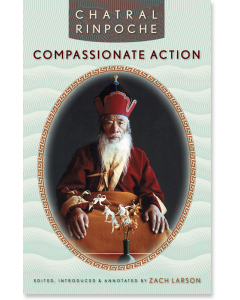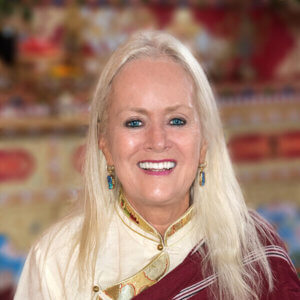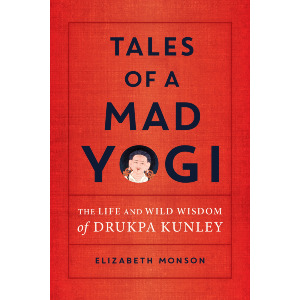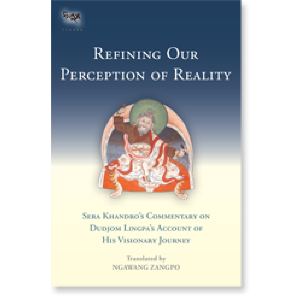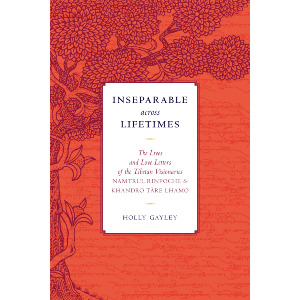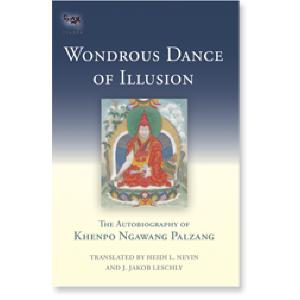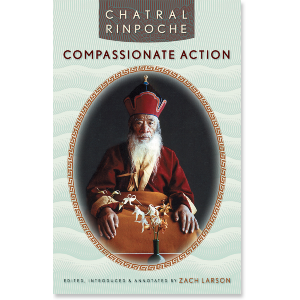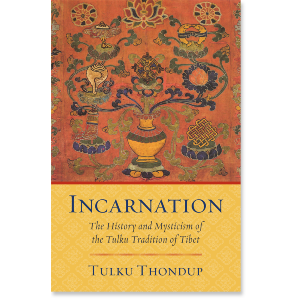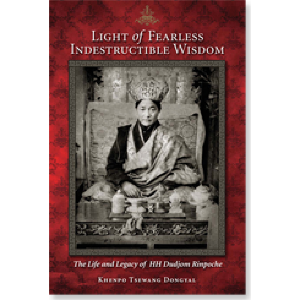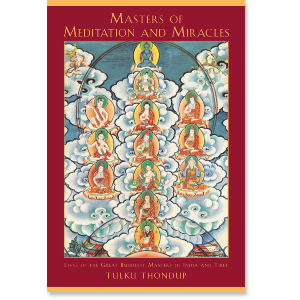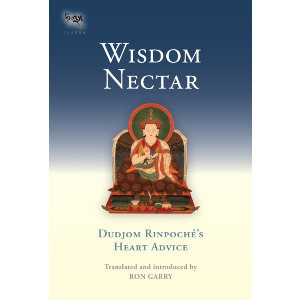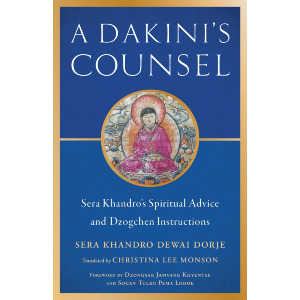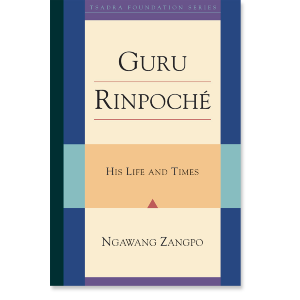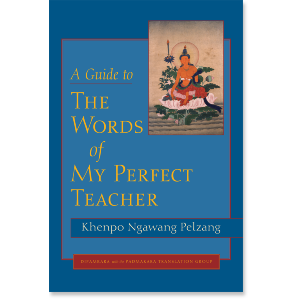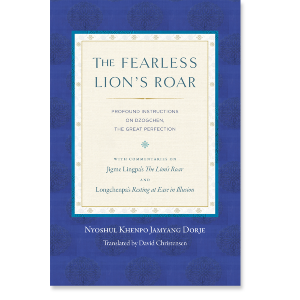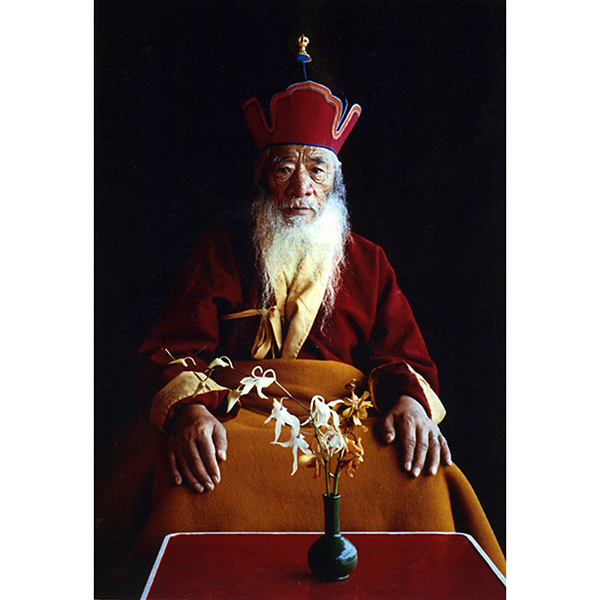

Chatral Rinpoche
GUIDES

The Passing of Christina Monson
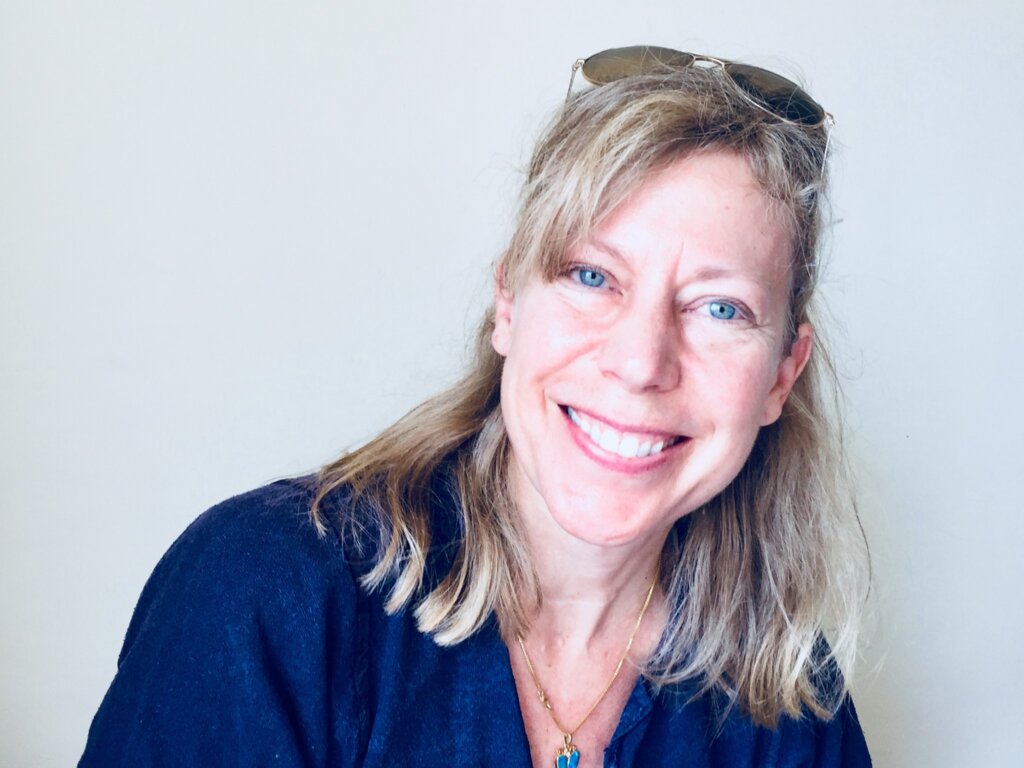
We are deeply saddened to share the news that Christina Monson—teacher, translator, and disciple of Chatral Rinpoche among others—passed away November 19, 2023.
Christina's book, A Dakini's Counsel: Sera Khandro's Spiritual Advice and Dzogchen Instructions will be released May 21, 2024. We knew she had little time left after her cancer diagnosis earlier this year. We had hoped she could hold the book in her hand, but she knew it was in a good place.
All of us at Shambhala Publications have our palms together to Christina for her ceaseless contributions to the Dharma generally, the Nyingma tradition, the Dudjom and Sera Khandro lineages specifically.
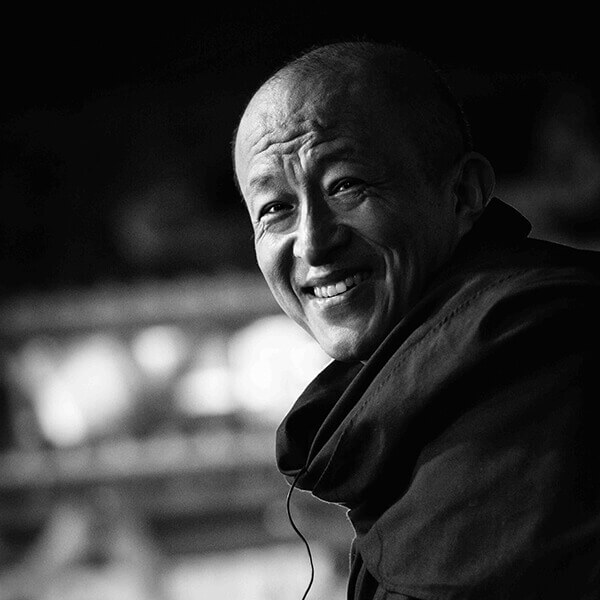
In addition to receiving teachings, abhishekas, and guidance from many great Mahasandhi masters—for example, Tulku Urgyen Rinpoche—Christina Monson also received decades of teachings from Kyabje Chatral Rinpoche. Therefore, I do not think of her as yet another mildly curious Dharma student but as a seeker after the truth who has been blessed and strongly influenced by many great masters, Chatral Rinpoche in particular. As such, I have no doubt that Christina made many good aspirations as she translated Sera Khandro’s words, and, as a result, now that this great lady’s words are being made available in English, there is far less chance of the meaning getting lost in translation. For this reason, my aspiration for this translation is that it will be widely read. May those who read this book not only come to know Sera Khandro and her teachings but may the reach of her buddha activities extend to infinity.
There have been an outpouring of appreciation for Christina as she was a mentor, friend, and dharma sister to so many.
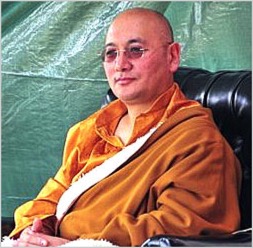
And when my Dharma siblings who I wished to remain here with me inseparably
Are led away without hope of intervening, by the Lord of Death himself, I feel sad
But sadness and grief don’t help; let us rouse strength of heart
And spurn ourselves to practice virtue and dedicate it with aspirations.
You can download the full prayer here.
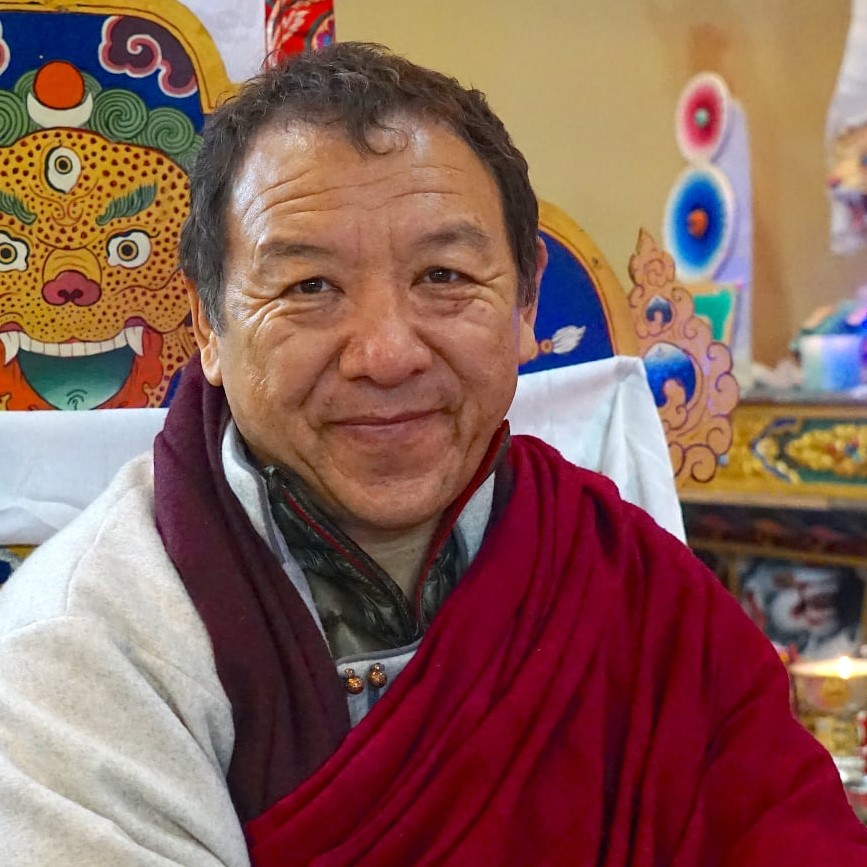
"She was a great practitioner during her lifetime and she was an example of how to be a Vajrayana student. She kept her samaya and bodhicitta mind throughout her life excellently. She was so kind and her teachings were immensely beneficial to the members of the Padmasambhava Meditation Center and many other sanghas. I am very grateful for everything she has done.
I have no doubt that Christina is in a very good place and I personally witnessed a rainbow around the sun on the day that she passed. I am personally sponsoring many practices for her.
I would request that everyone do prayers for her. Please recite Vajrasattava, Chenrezig, Guru Yoga and whatever practice you do and dedicate it to Christina's full enlightenment."
"It’s hard to write this but important. As we were receiving the Kudong of Wangdu Rinpoche at Tara Mandala November 19, 2023, the great Yogini and Translator Sangye Gyalmo, Christina Monson integrated her consciousness into the Dharmakaya and passed from this world. I last met her in July and we spent ten days together. I really wanted her to live, she had so much more to give and to translate. I wanted her to come out from the role of translator and teach and she would have, but sadly for us this was not to be in this life… but let us pray for her rapid rebirth. A great Yogini has departed from this world and she should be honored as such. One of the last things she said to me as she was dying was
'Your personal practice is all that matters in the end.'
She remained in tugdam 3 days in Oakland and left a trail of rainbows.
Her book “A Dakini’s Counsel” will come out next spring and she sent me the manuscript to write an endorsement, which I happily did. Here is a fragment from it, it is a poem from her consort Drimé Ozer about Sera Khandro. I pulled it spontaneously from the manuscript and I think it applies to Christina as well.
From "An Offering from the Vulture to the Cuckoo" by Drime Ozer:
Reflecting on all your noble qualities deepens my faith.
Seemingly I’m lost, an ordinary person
controlled by the five poisons.7
But the manifestative potency of your great bliss wisdom
automatically connects my body, speech, and mind to their vajra essences
and introduces me to undistracted luminosity,
my true dharmakaya nature.
Extraordinary is your great kindness,
Noble Lady, my Wish-Fulfilling Jewel.The ultimate expanse
is definitely devoid of characteristics to fixate upon.
Yet, from the perspective of disciples who are training,
teacher and retinue seemingly appear.The fundamental nature of reality
is but a single indivisible sphere.
Yet, those with impure perception
see it as distinct from confusion.In essence, awareness transcends fears
about birth and death,
but for those who cleave to permanence,
dying and becoming seemingly appear.Most certainly you have mastery
over the phenomena of samsara and nirvana,
yet you continuously practice
the two stages of development and completion.
Related Books
By Christina's sister Elizabeth:
Books Related to Sera Khandro
Books Related to Chatral Rinpoche
$39.95 - Hardcover
By: Heidi L. Nevin & J. Jakob Leschly & Khenpo Ngawang Pelzang & Khenpo Ngawang Palzang
Christina Monson on the Naturalness of Illness, Dakini Guidance, and Chatral Rinpoche

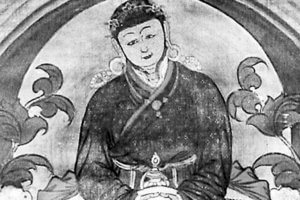
Sera Khandro: A Reader's Guide

Explore Nyingma Lineages: Dudjom Tersar | Longchen Nyingtig | Namcho & Palyul
Guides to Important Nyingma Figures:
Rongzompa | Longchenpa | Jigme Lingpa | Patrul Rinpoche |
Sera Khandro | Mipham Rinpoche | Dilgo Khyentse Rinpoche | Dudjom Rinpoche | Thinley Norbu Rinpoche
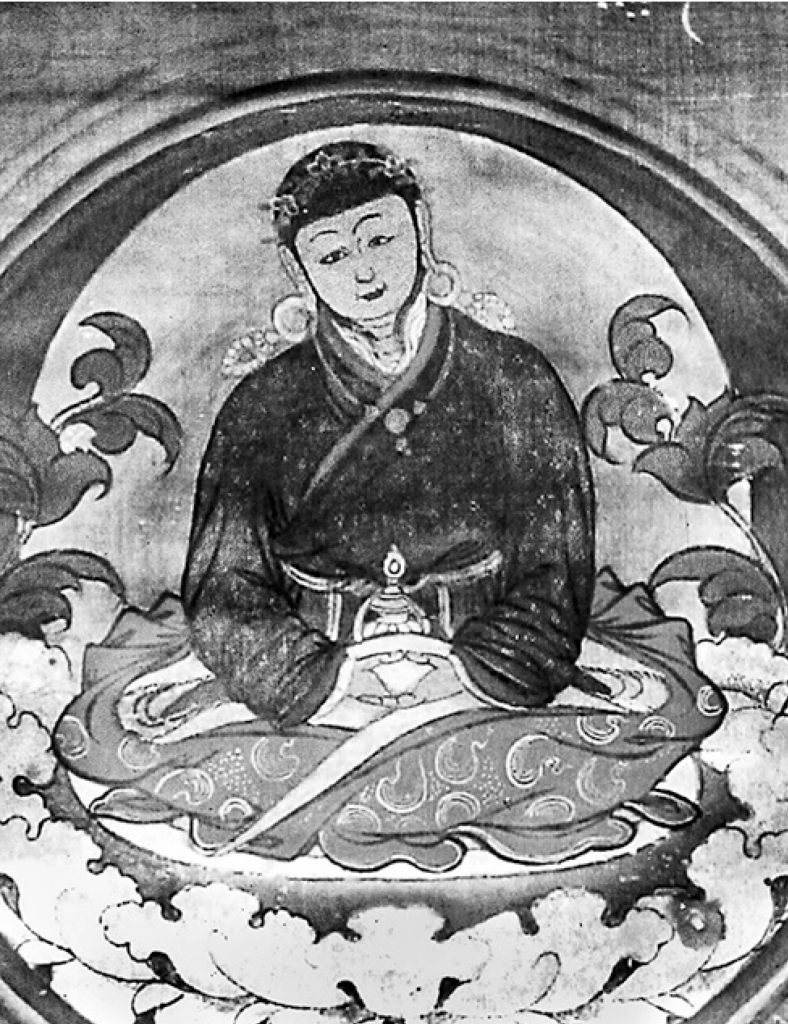
About Sera Khandro
Sera Khandro (1892 - 1940), also known as Kunzang Dekyong Wagmo, was one of the great masters of the early 20th century and the English speaking world is fortunate now that both her story and her writings have been emerging more and more over the past few years.
Her story is at once fascinating, heartbreaking, and ultimately uplifting.
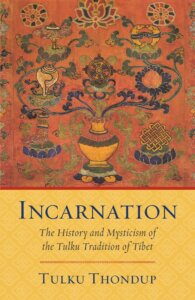
"This great yogini was known as a tulku of Yeshe Tsogyal, the consort of Guru Rinpoche and many others. She is an exemplar, similar to many tulkus who pursued the missions of their incarnation from childhood, even when it seemed almost impossible to succeed. Throughout her childhood and teenage years, and even into adulthood, she received transmissions and prophesies in many pure visions of wisdom dakinis and adepts. Sera Khandro Dewe Dorje was born as a beautiful princess in a rich and influential noble family in Lhasa, the capital of Tibet. While she was still in her early teens, her father arranged her future marriage. The princess strongly wished to dedicate her life fully to Dharma, and she vehemently opposed the marriage arrangement. Finally, after attempting to commit suicide, she successfully undid the arranged engagement. One day, a group of rugged nomad pilgrims from Golok province arrived in Lhasa, after many months on the harsh trail. By chance, they camped on the compound of Sera Khandro Dewe Dorje’s family palace. Through a window, the young princess looked down on the compound and glimpsed Tulku Drime Ozer (1881–1924), the leader of the pilgrims. She instantly felt an immense devotion to the tulku, and from that point forward, he became the innate symbol of her spiritual direction.
"Before long, the time came for the pilgrims to return to their home. The fourteen year old princess renounced her possessions and made a dangerous escape in order follow the pilgrims. From that day forth, Sera Khandro Dewe Dorje’s life changed drastically. She had to learn how to beg for food to survive. Her fancy clothes gave her little protection when crossing the harsh terrain of the high northern plateaus of Tibet. And her fancy, flimsy shoes gave up on her. The young princess had to keep up with the caravan by walking and running barefoot month after month with little or sometimes no food. Because of their ignorance and prejudice, no pilgrim would extend any support or protection to the princess. She hardly had any opportunity to exchange words with the tulku, as he was always strictly guarded. But she used all of these difficult circumstances to invigorate her spiritual dedication.
"The party finally reached their home in Golok, and even there Sera Khandro Dewe Dorje endured harsh treatment from wild and jealous nomads. For over a decade she survived by taking on the lowly job of caring for the animals of nomad families. Despite these hardships, she didn’t once consider returning to the luxuries of her home in Lhasa. And during this time, she continuously received transmissions and prophesies in pure visions, enjoying the highest spiritual ecstasies with total dedication to serving the dharma and the lineage of Guru Rinpoche — the sole mission of her reincarnation.
"At the age of thirty, Sera Khandro Dewe Dorje became the consort of Tulku Drime Ozer. For the last few years of Tulku Drime’s life, the two of them discovered many ters (the mystical revelations of esoteric teachings) together. Sera Khandro Dewe Dorje also wrote a number of scholarly texts and became a highly respected teacher of esoteric Dharma, with many mystic followers."
Tulku Drime Ozer was the son of Dudjom Lingpa (and brother of the third Dodrubchen Rinpoche) and his tulku was Thinley Norbu Rinpoche.
Tulku Thondup also discusses Sera Khandro in several places in his classic Masters of Meditation and Miracles.
The most comprehensive scholarly treatment of Sera Khandro to date is Sarah Jacoby's Love and Liberation: Autobiographical Writings of the Tibetan Buddhist Visionary Sera Khandro. This is an academic work, though of great value for anyone interested in this amazing master's life and work.
An excerpt from Love and Liberation can be found on the Yogini Project website.
For a concise biography see the entry at the Treasury of Lives.
She is also discussed in Wisdom Nectar: Dudjom Rinpoche's Heart Advice and The Light of Fearless Indestructible Wisdom: The Life and Legacy of HH Dudjom Rinpoche.
Light of Fearless Indestructible Wisdom
$34.95 - Paperback
By: Dudjom Rinpoche & Khenpo Tsewang Dongyal Rinpoche & Khenpo Tsewang Dongyal
Sera Khandro's Works
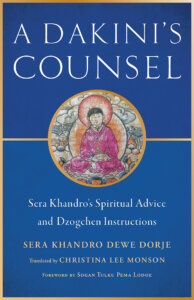
Another significant full work of Sera Khandro's in English is Refining Our Perception of Reality: Sera Khandro's Commentary on Dudjom Lingpa's Account of His Visionary Journey.
This book contains four Tibetan texts in translation. First, The Excellent Path to Liberation explains how to give our attention to the teachings, and how to ground our spiritual practice in harmonious relationships with others and the world at large.
Second, Dudjom Lingpa’s account of his visionary journey, Nangjang, Enlightenment without Meditation, translated elsewhere as Buddhahood without Meditation, teaches by example that as practitioners we should ask ourselves sincere questions concerning our perception of reality, and that we should not be content with superficial answers.
In the third text, Sera Khandro presents Dudjom Lingpa’s work within two frameworks. She first clarifies the view on which the spiritual path is founded, the path of meditation; the ensuing conduct that reflects and enriches meditative experience; and the path’s result—awakening and enlightenment. Next she illuminates the subtleties of the great perfection view, the four tantric bonds: nonexistence, a single nature, pervasive insubstantial evenness, and spontaneous presence.
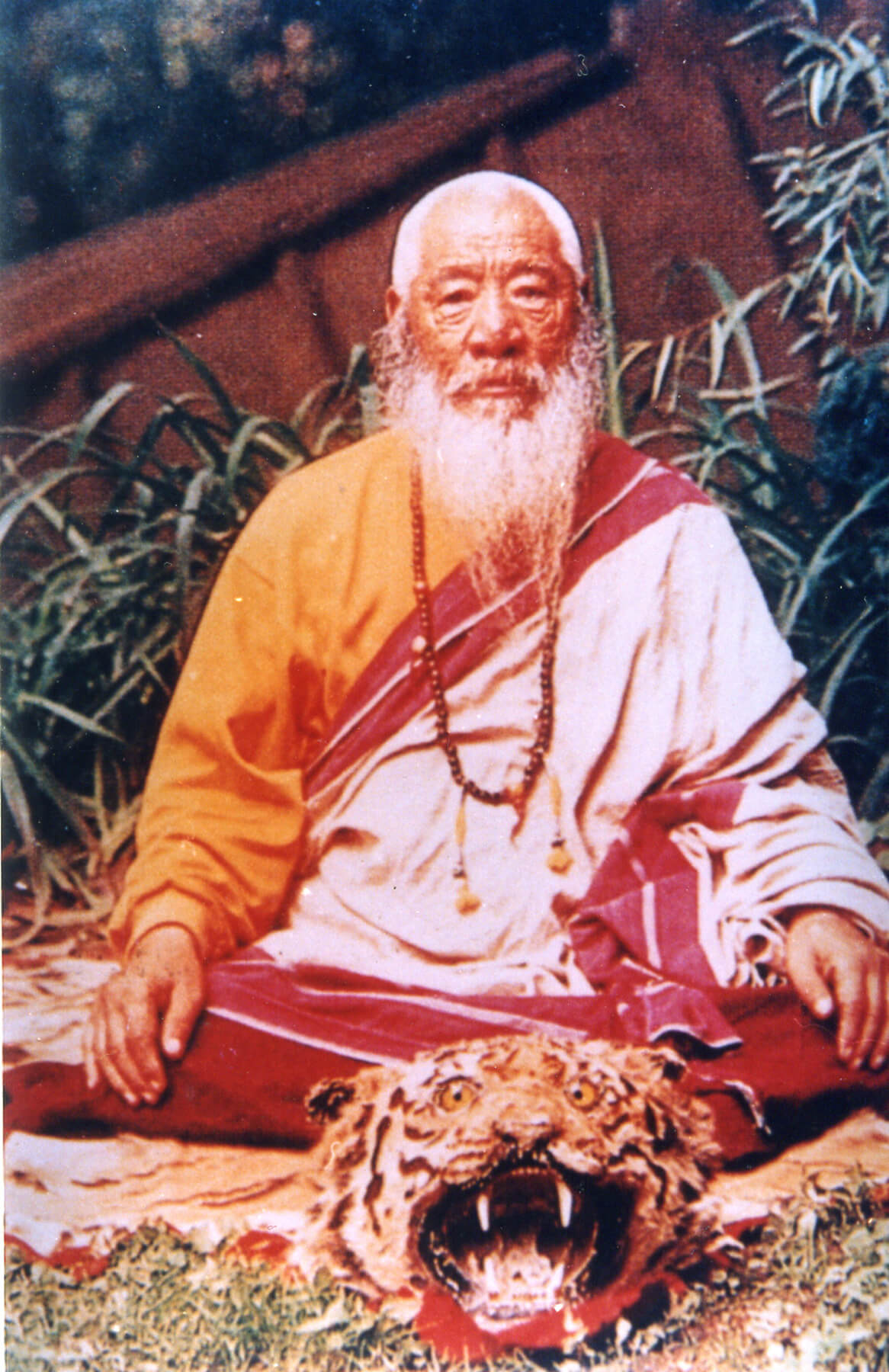
This volume also includes a significant fourth text: a short autobiography of Sera Khandro, translated by Chatral Rinpoché’s disciple-translator Christina Monson.
Please note that Chatral Rinpoche requested that people only read this book if they have completed ngondro, the preliminary practices, of any Vajrayana tradition. To try to maintain visibility of this requirement, this volume is only available from shambhala.com.
Termas
Sera Khandro's termas are included in four volumes, only a portion of which have been translated into English.
One of the termas she discovered was The Immaculate White Lotus: The Life of the Master from Oddiyana by Dorjé Tso, one of Guru Rinpoche's consorts who Sera Khandro is considered an incarnation of This come from the treasure cycle called The Dakini’s Secret Treasury of the Nature of Reality that was concealed by Guru Rinpoche. It is ten short chapters that fill 17 pages in English.
This appears in Guru Rinpoche: His Life and Times, a collection of biographies of Padmasambhava.
Note that the translator of this book referred to her birth year was 1899 and the discovery of this text as 1927 (she wrote she discovered it when she was 27), but the consensus now puts her birth year at 1892. So this was likely discovered around 1920.
This treasure is still popular in eastern Tibet, where she spent most of her life.
Additional Resources
For additional works available in English, see her page on Lotsawa House.
Christina Monson translated some additional material including The Excellent Path of Devotion: An Abridged Story of a Mendicant's Experiences in Response to Questions by Vajra Kin that was privately published and may prove tricky to find.
For her works in Tibetan, see the TBRC site, currently listing 19 works.
Sera Khandro's Legacy
Sera Khandro's legacy remains firm today. There are several teachers who hold the lineage.
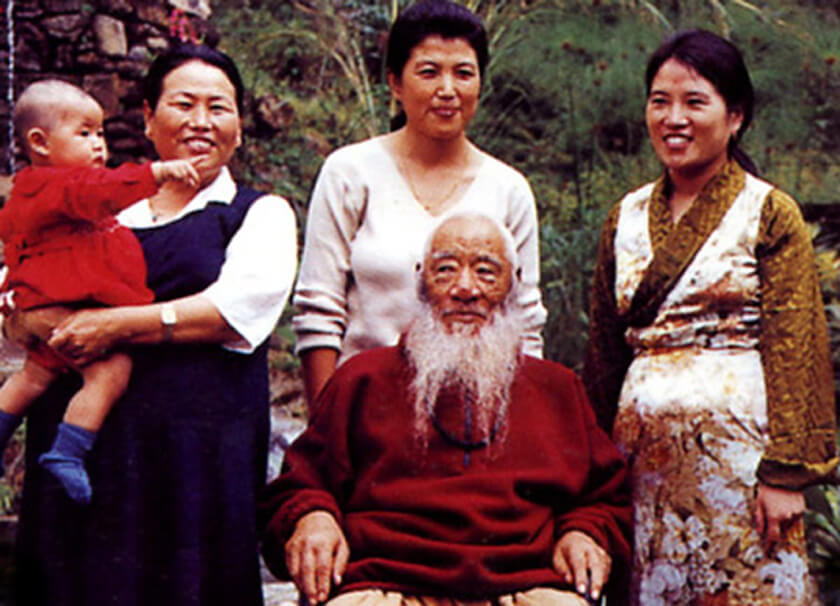
Chatral Rinpoche also passed on pith instructions from Sera Khandro's guru sadhanas, Dzogchen practices, and Chenrezig sadhanas she revealed to Dudjom Rinpoche as is recounted in The Light of Fearless Indestructible Wisdom: The Life and Legacy of HH Dudjom Rinpoche.
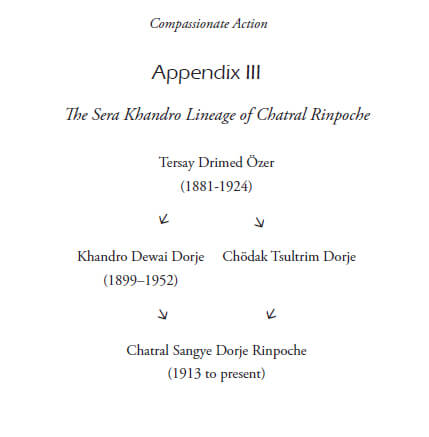
From Chatral Rinpoche's Compassionate Action. Note, the dates are no longer considered correct.
Sera Khandro comes up repeatedly in Holly Gayley's account of the 20th century terton couple in Inseparable Across Lifetimes: The Lives and Love Letters of the Tibetan Visionaries Namtrul Rinpocheand Khandro Tare Lhamo. Khandro Tare Lhamo is considered an emanation of Sera Khandro (recognized as such by Dudjom Rinpoche, among others) and there are aspects of her life that mirror Sera Khandro's. For those interested in Sera Khandro, this account is essential as it demonstrates her legacy in eastern Tibet, as well as show all the connections to the present day, in particular through the Dudjom lineage.
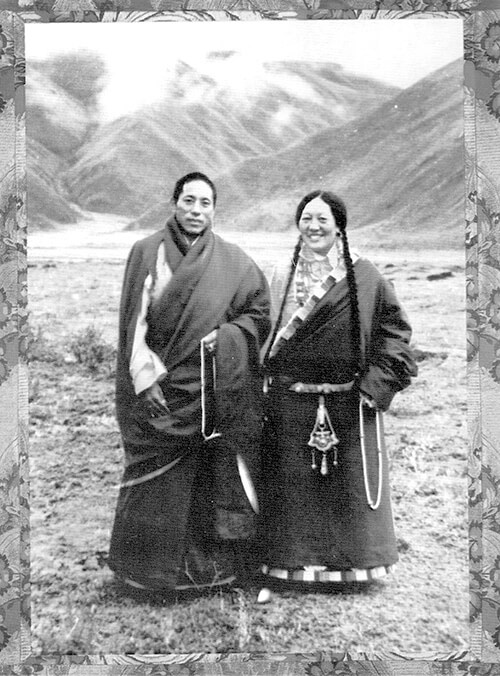
Namtrul Rinpoche and Khandro Tare Lhamo, an incarnation of Sera Khandro
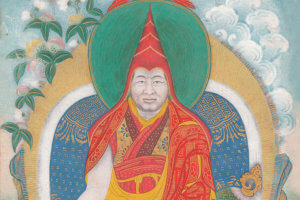
A Biography of Khenpo Ngawang Pelzang (Khenpo Ngaga)
A Short Biography of Kathog Khenpo Ngawang Pelzang, also known as Khenpo Ngaga and Khenpo Ngakchung (1879–1941)
Excerpted from The Guide to the Words of My Perfect Teacher
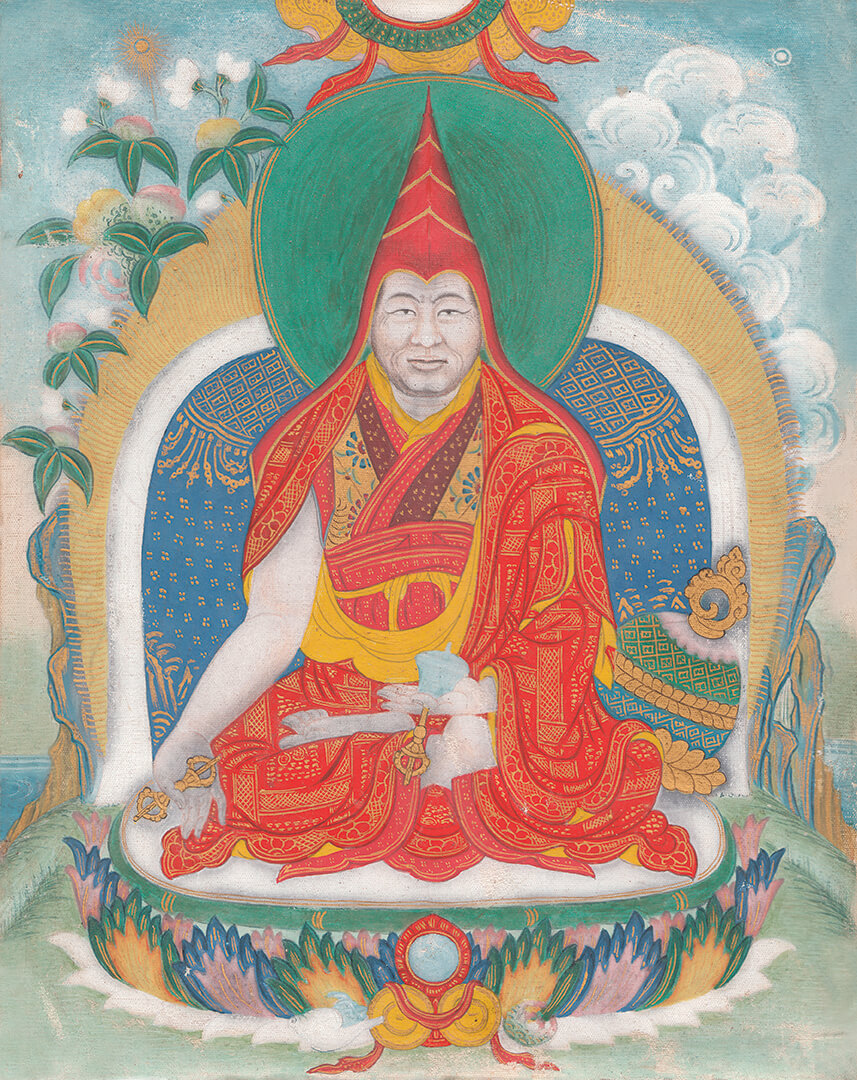
In Khenpo Ngakchung’s case that "someone" was a whole series of accomplished beings in India and Tibet—scholars, yogis, translators, Dharma kings, treasure discoverers—summarized in one biography as twenty-five great incarnations. Foremost among these was Vimalamitra, the great Indian master who was responsible, with Guru Padmasambhava, for introducing the Nyingtik teachings to Tibet and who promised on his departure from Tibet to send an emanation every hundred years. Khenpo Ngakchung had also been, in a previous life, the Indian master Sthiramati, Vasubandhu’s foremost Abhidharma student, and this was to hold him in good stead when he came to study this difficult subject.
His teacher Nyoshul Lungtok Tenpai Nyima (1829–1901/2*), himself an incarnation of the great abbot Shantarakshita, spent twenty-eight years constantly in the company of Patrul Rinpoche, receiving from him all the Nyingtik teachings, practicing them under his guidance, and attaining full realization of the Great Perfection. When at the end of this time Patrul Rinpoche told him to return home, he could not bear to leave, but Patrul Rinpoche comforted him by telling him that in due course he would meet Kunkhyen Longchenpa. The truth of this prediction duly became clear when, following a series of signi.cative dreams, a small boy, the future Khenpo Ngakchung, was presented to him.
Khenpo Ngakchung was indeed a most unusual child. Even as a baby he displayed miraculous powers and had visions of deities. From his early teens he accompanied Lungtok Tenpai Nyima constantly, serving him, listening to his teachings, and, in his spare time, practicing. Even before completing the preliminary practice he had meditative experiences usually associated with the main practice of the Great Perfection. While doing the mandala practice he had a vision of Longchenpa, in which he was introduced to the nature of mind. Lungtok Tenpai Nyima downplayed these experiences, insisting that Ngawang Pelzang go through the whole path in the proper order so that he could achieve stable realization and truly benefit beings. In this way, he completed all the stages of the practice—the preliminaries, sadhana recitations, yogas, and the two aspects of the Great Perfection, trekchö and thögal—by the time he was twenty-one, when his teacher recognized him as his Dharma heir and sent him to Dzogchen Monastery to study under the learned khenpos at the monastery’s Shri Singha shedra (college). While there he met Mipham Rinpoche, who entrusted him with the Introduction to Scholarship (mkhas ’jug) which he had just finished writing. Two years later, after Lungtok Tenpai Nyima had passed away, he performed several retreats, all marked by extraordinary signs of accomplishment. He continued to study and practice, and to receive further teachings and empowerments from other great teachers, in particular the second Kathog Situ, Chokyi Gyatso (1880–1925). He also began giving teachings himself. His calling as a khenpo was no doubt encouraged by a vision he had of Patrul Rinpoche in which the latter stressed the importance of education and monastic observance. At the age of thirty he was appointed to teach at Kathog Monastery’s newly opened shedra, at first as assistant to Khenpo Kunpel (author of an important commentary that synthesizes Patrul Rinpoche’s teachings on the Bodhicharyavatara), and later as the shedra’s khenpo. He stayed there for the next thirteen years, teaching, giving empowerments, and ordaining thousands of monks, as well as receiving many important transmissions.
The “experiential” instructions (myong khrid) that Lungtok Tenpai Nyima had received from Patrul Rinpoche and passed on to Khenpo Ngakchung became the tradition of Nyingtik practice at Kathog Monastery, and it was Lungtok Tenpai Nyima’s Kathog followers who built the Nyoshul monastery in Derge, of which Khenpo Ngawang Pelzang became the first abbot. After his years at Kathog he traveled widely in east Tibet, establishing monasteries and shedras, giving teachings, practicing in retreat, and writing. The thirteen volumes of texts he composed include commentaries on Madhyamika treatises by Chandrakirti and Aryadeva, texts on sadhana practice, commentaries on Vajrayana, and works on the Great Perfection, many of which were teachings that he had received from Lungtok Tenpai Nyima. He was also responsible for propagating the teachings he received from Shenga Rinpoche on Nagarjuna’s fundamental texts of the Madhyamika.
The visions, meditative experiences, and miraculous events that occur throughout Khenpo Ngakchung’s life may seem to us almost the stuff of legend, yet some of them took place less than seventy years ago, and there are still one or two of his disciples living. The spiritual renaissance in eastern Tibet with which he was intimately connected is perhaps all the more remarkable for the fact that the region was not always an oasis of calm and often had its share of troubles and unrest. His activity in benefiting beings has extended to the West, where Buddhists practicing the Nyingtik teachings have been taught by masters who can trace their lineage back to him through his disciples, among them Nyoshul Shedrup Tenpai Nyima, Jamyang Khyentse Chökyi Lodrö, and Chatral Rinpoche. This, and the fact that the Zintri is now accessible to the English-speaking world, was perhaps foreseen in a dream Khenpo Ngakchung recounted to his teacher. In it he saw an immense stupa being destroyed and washed away by a river flowing west into the ocean, and he heard a voice from the sky saying that millions of beings in that ocean would be benefited. Lungtok Tenpai Nyima later explained that this dream foretold the destruction of the doctrine in the East and its spread to the West.
Books by Khenpo Ngaga
$39.95 - Hardcover
By: Heidi L. Nevin & J. Jakob Leschly & Khenpo Ngawang Pelzang & Khenpo Ngawang Palzang
A Guide to The Words of My Perfect Teacher
$34.95 - Paperback
Books Featuring Khenpo Ngaga

Please also enjoy some downloadable translations of Khenpo Ngawang Pelzang at Lotsawa House.
Words of Advice from Chatral Rinpoche
The world lost one of its greatest meditation masters and teachers in the past few days, Kyabje Chatral Sangye Dorje Rinpoche, at the age of 103 or 104. Chatral Rinpoche was a teacher's teacher - a bridge between the great teachers the 19th and early 20th centuries like Khenpo Ngagchung, Sera Khandro, and Dudjom Rinpoche to the teachers of today. His list of students is a Who's Who of some of the most brilliant and accomplished teachers, mostly in the Tibetan tradition, but beyond it as well - it was he who Thomas Merton referred to as the greatest man he had ever met. Chatral Rinpoche's impact cannot be overstated.
Below is an excerpt from the one and only book of Rinpoche's teachings, Compassionate Action, in which he addresses a gathering of practitioners from the Nyingma tradition of Tibetan Buddhism in Bodhgaya, the seat of the Buddha's enlightenment. While this advice was directed at a specific tradition with Himalayan Buddhists, the main points of developing compassion and an authentic practice apply to us all.

______________________________________
Since I am the eldest of the Nyingma lamas, I have been asked to share some humble thoughts and opinions with all those who have gathered here this year in the sacred place of Bodhgaya, India on the occasion of the Eleventh Annual Great Prayer Festival of the Early Translation School. I will therefore speak a few words of advice to express my point of view, so I hope you all listen well. First of all, I greatly rejoice that by the kindness of many benefactors and volunteers, the Great Nyingma Prayer Festival has been taking place for many years and I myself - an old man - was able to attend it for the first three years.
Now, since we are all followers of the Buddha, we should know that taking meat and alcohol is very bad. This is one of the main things we should abandon. So the fact that everyone has agreed that we will refrain from meat and alcohol [during the Great Prayer Festival] and realized that there is simply no need for us to take these things is a result of the buddhas' compassion.
Some of you have a lot of responsibilities and things to look after - such as taking care of your wife and children - and in reality are therefore unable to accomplish great deeds for the benefit of the Buddha's Teachings.
As for the excellent tradition of the Great Nyingma Prayer Festival, it has been established in general to restore, preserve and expand the teachings of Lord Buddha and in particular those of the luminous Vajrayana tradition of the Early Translation School, which is endowed with the special sixfold greatness. One should not mix the Dharma with worldly affairs because this Festival has been established for the sole purpose of the Dharma. Therefore, if we allow these two to get mixed up together, it is like putting fire and water in the same vessel. If the fire is very strong, the water will dry up. If the water predominates, the fire will die. So don't get mixed up with politics.
Above all, what do we need to develop bodhicitta? Have not all the beings of the six realms - having passed through the bardo and been reincarnated many times - at one point been our mother and father? By following over and over the path of the Mahayana taught by the Buddha, all temporary and ultimate subtle and gross suffering will be mollified for everyone. The temporary and ultimate benefits of happiness and goodness will increase further and further.
These days we are living in the age of the five degenerations, also called the "five insurmountables. " In this wild and unruly time, because of such things as the proliferation of many kinds of evil weapons and the spread of different kinds of poisonous drugs such as tobacco, the Buddha's teachings are being taken away as if by an untimely frost. From all angles the explanation and practice of these precious teachings have many obstacles. Favorable conditions are few. It is like a pond that has lost its water through drought or a butter lamp that has run out of oil. Everyone knows and understands that it has come to be like this. So, to focus on restoring these teachings is what we mean here by "contributing to world peace. " Apart from that, you can't simply take "peace " from one country and export it to another one. Each country or state has one person as the leader of that country or state. Different types of dark forces have transformed the minds of all of these people and they view their neighbors with prejudice; the small ones view the big ones with envy, the big ones treat the small ones with contempt and equal-size ones see each other as being competitors. Because of such biases, they engage in all kinds of wars. Even if the country we live in has peace today, in each country war will eventually be fought. These conflicts are as numerous as the grass that grows in a summer meadow or the bright stars that come out at night once the sun goes down. This is something tangible that we can see with our own eyes. So it is in order to pacify these hostilities that we recite prayers of aspiration.
The prayers that we are using in this Festival are "Reciting the Names of Manjushri " - which is the quintessence of both the sutras and the tantras - and "The King of All Aspirations, "120 which is the main prayer according to the sutras. These teachings have the complete meaning of both sutra and tantra in them. Along with them,we also recite The Treasure of Blessing: A Sadhana of the Buddha and conclude each day with a prayer that the teachings of the Nyingma Tradition may flourish called "The Words That Rejoice the Dharma King, " both composed by Jamgon Mipham Rinpoche (1846-1912). These are prayers that all of us should include in our daily practice. If that isn't possible, we should at least not fail to recite them on the tenth and twenty-fifth days of the lunar month.
It would be wrong to say, as some do, that if we don't recite prayers while being aware of their meaning and merely repeat the words mindlessly, it has no benefit whatsoever - like prayer flags flapping in the wind. However, there are indeed differences in the level of benefits and blessings derived from prayers according to the way we recite them. Therefore, keeping this in mind, at the beginning of the practice, generate bodhicitta. During the main practice, some will use an object of concentration and some will practice without an object of concentration; each person should do what is best according to their level. At the end, one should dedicate the merit in a way that is pure from the three conceptual spheres to the best of one's ability. The most important and essential thing in making this Great Prayer Festival meaningful is to depend on those three stages of practice - generation of bodhicitta, the main practice and dedication of merit. All must do the complete three stages of practice.
Especially because we follow the teachings of the Nyingma Early Translation School, in the area of the view, conduct must not get lost and in the area of conduct, the view must not get lost. As Guru Rinpoche said,
In the direction of the view, if conduct gets lost, the view goes to the tarnished state of Mara. In the direction of conduct, if the view is lost, having become entangled by the hopes and fears of materialism and ideology, real liberation will never come and there is no way you can reach the level of the unified state.
This should be understood. Lamas, tulkus, and khenpos have studied many texts and know and understand this, so there is no need for me to remind them further.
These days in our Nyingma Tradition, philosophical colleges and retreat centers are spreading everywhere. What I have said thus far is no different than what the teachers explain in those centers and what the students listen to. As a result of our training, we are participating in this large gathering at Bodhgaya during the twelfth lunar month - the eighteenth day of this month being the anniversary of the passing of the all-knowing Longchen Rabjam. Before that day comes - from the first to the tenth - we strive to perfect the accumulations [of merit and wisdom] and purify obscurations.
Many devotees who have faith in the Three Jewels and, especially in this Great Prayer Festival of the Early Translation School of the secret Mantrayana, have made offerings for the benefit of those who have died, for those who are helpless and without a protector and for all living beings. Fellow devotees who are in a position to receive these offerings have accepted them. These religious offerings made for the sole purpose of helping the dead and the living are not something that should be taken lightly. Pondering the significance of these religious offerings, all of you must do dedication prayers and make pure aspirations for the sake of the deceased.
For the benefit of the living, we serve them with a protective prayer ritual for the sake of long life and prosperity according to their respective inner wishes. After consulting with the astrologers and doing divination, when the list of prayers to recite in the puja to help that person is announced, make sure you perform the service correctly. It won't be beneficial if you don't chant the prayers and say the dedication, leaving only us to enjoy the faith offerings. This will mature as a heavy karmic burden! We must purposefully take on this great responsibility and put a seal on the practice by doing the aspiration and dedication prayers. If you put a drop of water into the ocean, until the ocean dries up, the drop of water isn't going to dry up. Similarly, by virtue of putting a seal on the practice through dedication prayers, the benefits of the practice will not rot or decay until you achieve Buddhahood. It is the Buddha's wish that this virtue not be wasted; it is the real essence of the flawless teachings of the Buddhist pandits. Everyone having understood this well; engage in the complete three stages of practice.
At a sacred place and special event like this when there is an oceanlike gathering of people, several of the great holy masters will be among them. Whoever of these great masters might be present, they should give advice like I am doing and everyone should respect and follow their advice. If you do this, imagine the manner in which the splendor of the teachings of the Nyingma Early Translation School will develop above and beyond what it is now. If you don't do this and try to pass on your responsibility to others, they will be disregarded and people won't listen. Even though some have the ability to teach, they don't use that ability. Other people either don't know or understand very little of the meaning of the teachings and say things unnecessarily.
There are a few who think that they don't need to explain general points to others because they are not interested or cannot bear to take on great responsibilities. I think this is wrong. Those who have responsibilities should advise those who don't, encouraging them to work on their discipline so it will improve year after year and become firm. If you place one being at a time on the path of discipline, thinking they will stay firmly on this path for at least one hundred years, then as long as the Buddhadharma remains, there will be harmony in the monastery with good clean discipline and no reason for others to criticize or judge. Nyingmapas and all other religious traditions have their own respective rules on discipline. Each must take responsibility for their own situation. The Nyingmapas cannot take responsibility for the other traditions - it can't be done.
Each of us Nyingmapas have either come from the three provinces, the upper, lower, and middle regions of Tibet, or been born in the noble land of India, Nepal, or anywhere in the Himalayan range east of Ladakh. There are hundreds of Nyingma monasteries - large and small - in those areas. In these monasteries, what is known as the Sangha - the monastic community - should distinguish between what is to be accomplished and what is to be avoided according to the threefold training and the Statements of the Tripitaka. By doing this, the so-called "noble Sangha " will be the same in both name and meaning. As it is said: "There is no guide like the Buddha. There is no protector like the Dharma. There is no fertile field like the Sangha. One should always rely on those three. " While saying that, you should also understand that, as a leading figure of the Three Jewels, the Sangha needs to engage seriously in the teachings of the Buddha and encourage others to do so. This is what is meant by being "holders of the Teachings. "
Apart from that, even if one is a fortunate businessman - no matter how well they did in amassing great wealth - a mansion itself will not make one a holder of the Buddhadharma. The nature of one's clothing will also not make one a holder of the teachings. Even wearing monk's robes will not make one a holder of the teachings. In reality though, even if a person is a lowly beggar, if they are in harmony with the Dharma they can be called a great person who is a holder of the teachings.
If you don't become like this, even if one thinks they are a holder of the teachings by being in various positions like the head of a sitting row or sitting exclusively on an exalted throne, it is a difficult thing if they may have a correction coming as to whether or not they are a holder of the teachings based on how they live. If one speaks purely in accordance with the Dharma, it might offend a few. If what I say is wrong, please forgive me. I openly confess it. It is my misunderstanding. It is a mistake. It is a distortion. It is lack of knowledge. If it may have also just been the phony advice of an old man, I don't know. As an old man saying these things, I am just proclaiming all the thoughts in my mind. It is possible that it is like this - that there was no need for me to discuss these things - that I am discussing that which I don't have reason to discuss and saying that which I don't have reason to say. All people will come to make mistakes like this - not just me.
Everyone said that there was a need for some spoken advice for this year's Great Prayer Festival. So, [Penor Rinpoche's attendant] Kunsang Lama was sent to me and came to Yangleshöd. At that time, I had been very busy satisfying some benefactors elsewhere in the Kathmandu Valley and while being in a great hurry I came to Yangleshöd. As soon as I had gotten out of the car, I spontaneously spoke this advice and did not have time to consult texts or write it down. There was no need to do so anyway. I don't expect it to be on the shelf of a Buddhist philosophical college library. For this year alone, it was suggested that among us elder Nyingma lamas, someone should explain how discipline should be kept. That was the opinion of others and I also think that this is right. Other lamas would not feel comfortable listening to the advice of someone who is unknown, so that is why one who is known as a "lama " like myself is speaking out.
Lamas, tulkus, and khenpos who are knowledgeable are qualified to give advice and should do so. Otherwise, those who just say things in the way of meaningless gossip and talk nonsense will just create conflicts. There is no benefit whatsoever in saying things that will only go on to increase our attachment, anger and delusion. Talking in this way will harm the Buddha's teachings and be of help to no one.
For the benefit of all beings, all the practitioners of the teachings of the Nyingma Early Translation School living in monasteries great or small, from Upper, Middle or Lower Tibet, in a mountain hermitage, a study center with just four monks or even if you are practicing alone; for all of you year after year when you gather here again at this time, you must take responsibility for upholding your discipline. For the period of these ten days, if you don't have something good to say, there is no reason for you to speak. You should behave in such a way that no one will have reason to criticize or gossip about your conduct so that you can be a perfect example to lead the faithful and become worthy objects of the accumulation of merit of the benefactors.
I hope and pray that this event will come to be very good through the planning at the beginning, middle and end. It will then serve to benefit the longevity of the great holy beings who hold the teachings of the Dharma. In the long term, it will also help the Buddha's precious teachings by way of the two chakras of teaching and practice to never fade and instead expand and flourish now and always in the four times and ten directions and abide for a long time.
During this degenerate age in the outer world, there are many natural disasters due to the upsetting of the four elements. Also, demonic forces come with their many weapons to incite the fighting of wars. All of those forces have caused the world to come to ruin and led all to tremble with fear - so terrified that their hair stands up on end. Still, the demonic forces find it necessary to come up with many new types of weapons. If we were called on to confront them, there's no way we Dharma practitioners could defeat them. That's why we make supplication prayers to the Three Jewels, do the aspiration prayers, the offering prayers and the prayers of invocation. We are responsible for those activities. This is what I urge you to do. So at this great gathering, please think about the pacification of all these forces.
Since I don't think there is anything inconsiderate or unacceptable in this advice, please listen to it carefully and take it to heart. If you do so, when the Great Prayer Festival is over, you will have good reason to be happy and will be able to rejoice in the merit you have accumulated. So please make it happen that way! May you have a long life! Please - all of you - make vast prayers of aspiration so that the precious teachings of the Victorious One may flourish in the ten directions. That's about all that an old man like me has to say. May you all keep this advice in your minds.
______________________________________
This oral advice was recorded and transcribed in 2000 and translated from the Tibetan by Zach Larson with the assistance of Tsetan Chonjore and Thinley Dhondrup in 2004.

